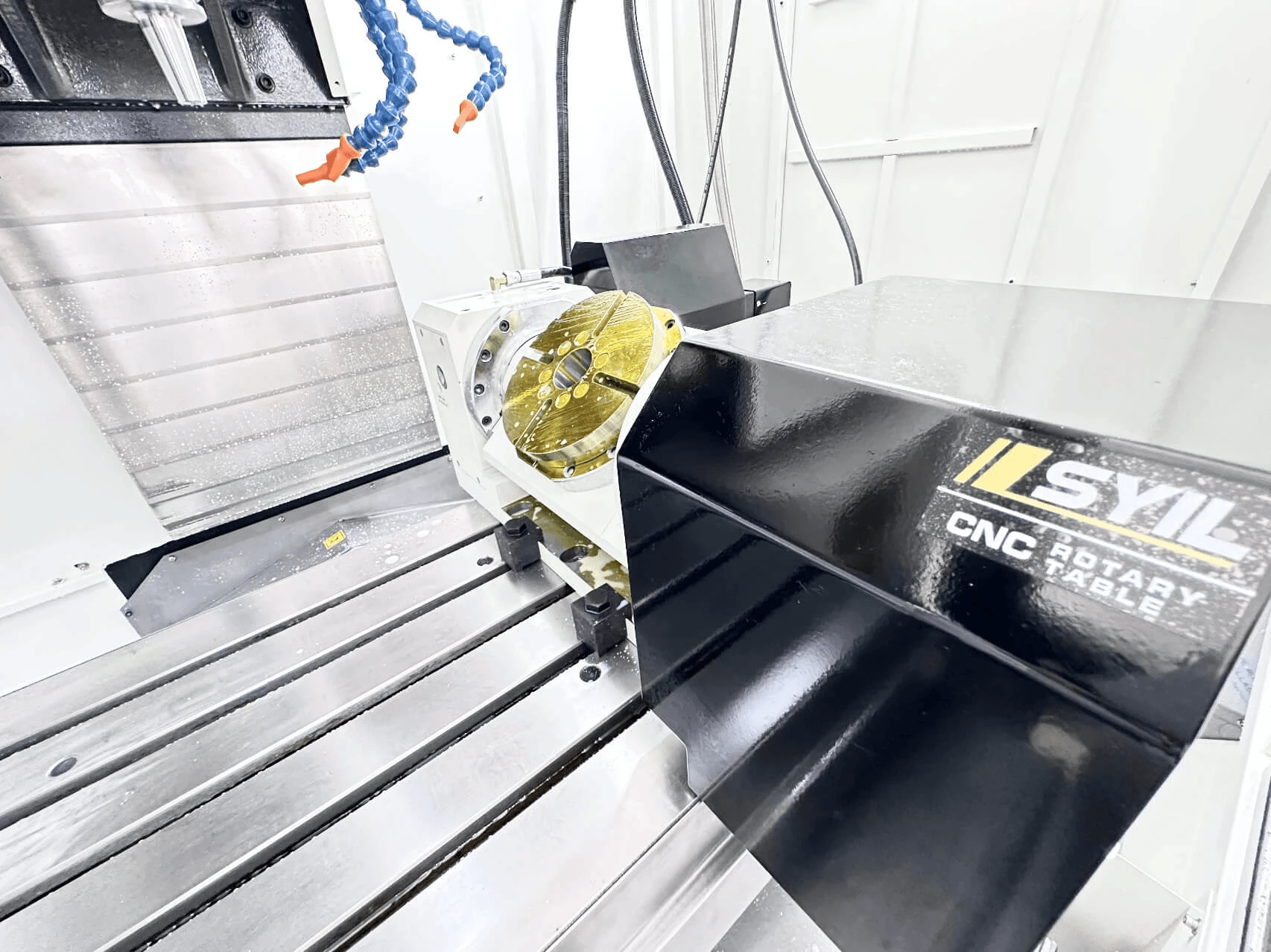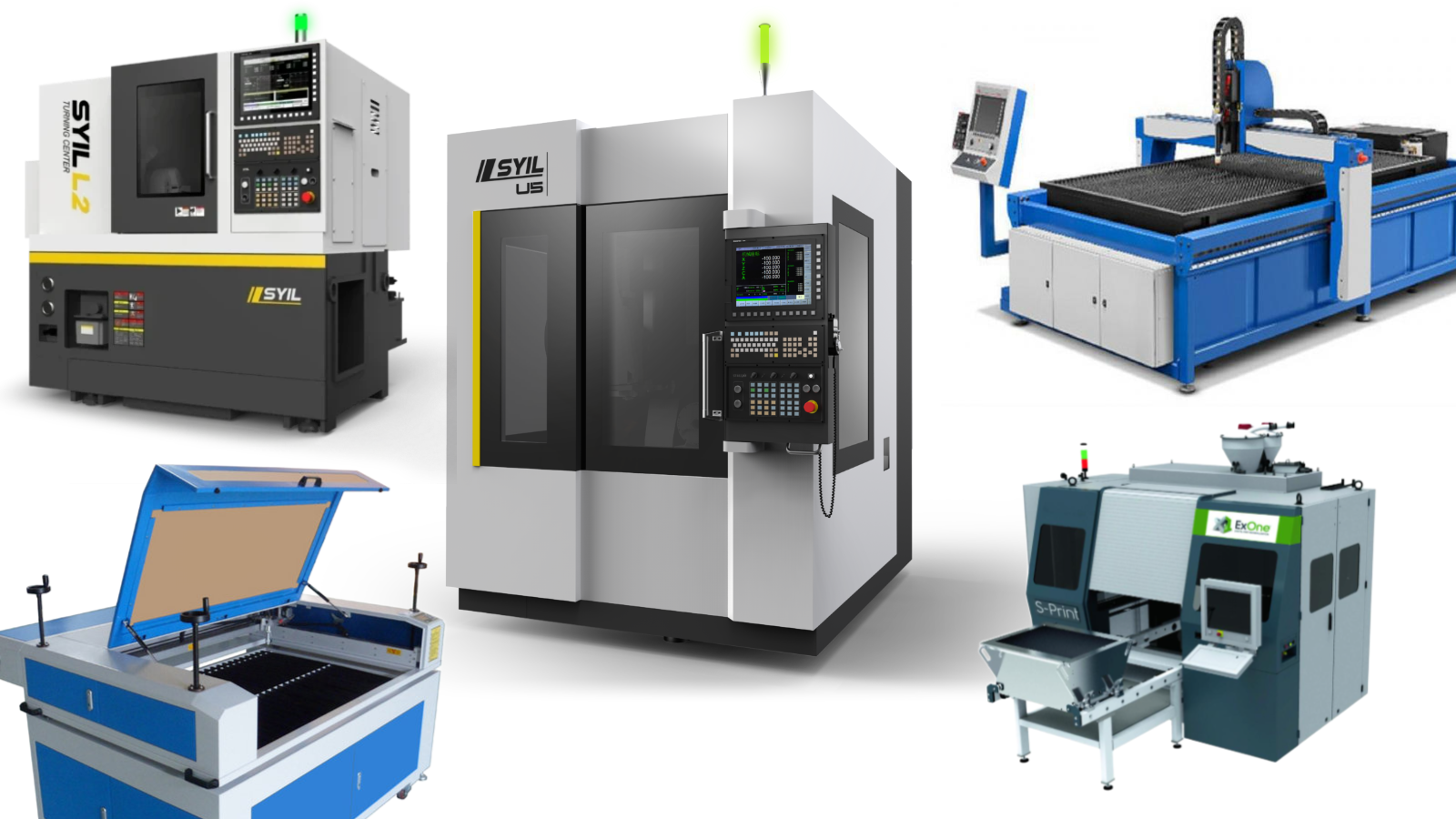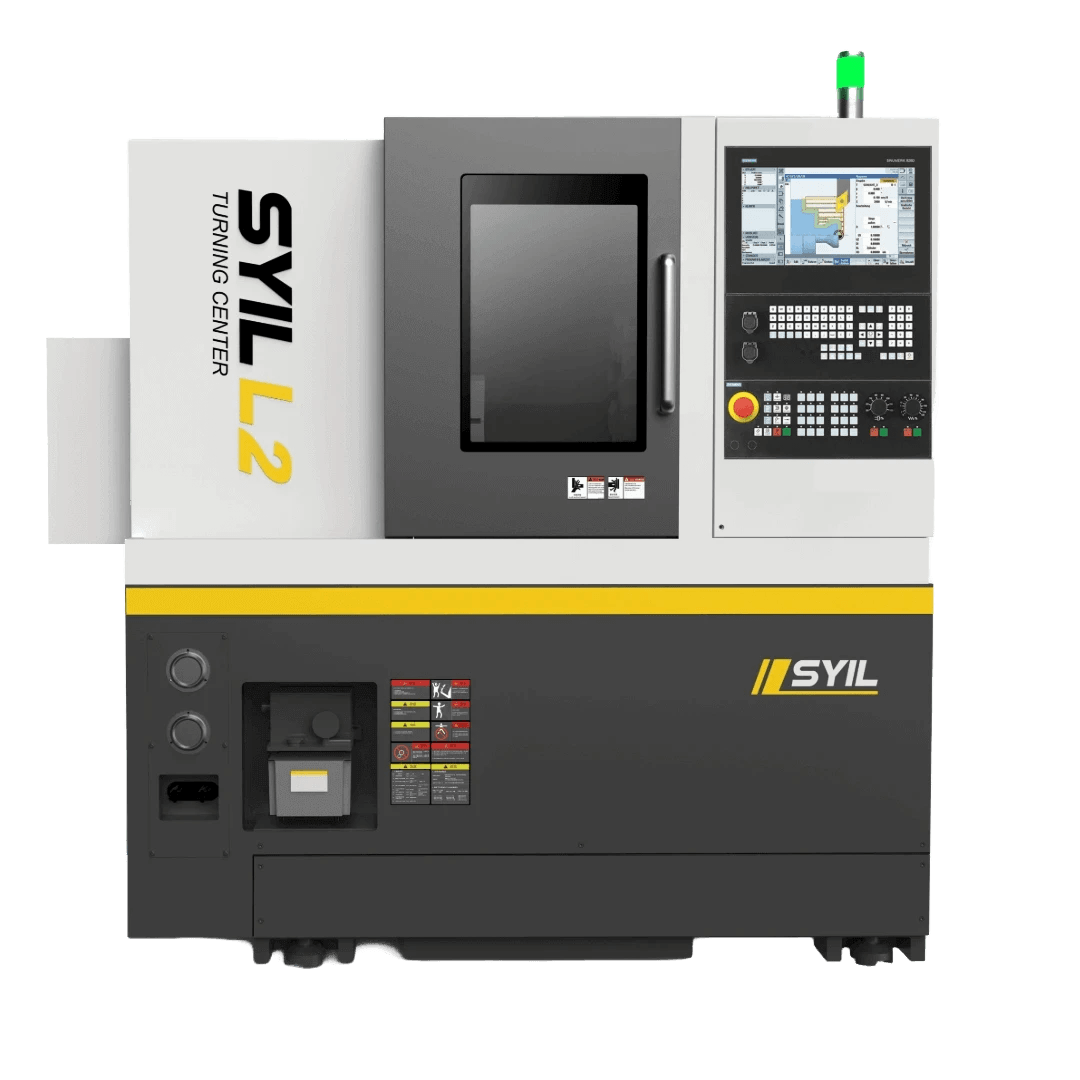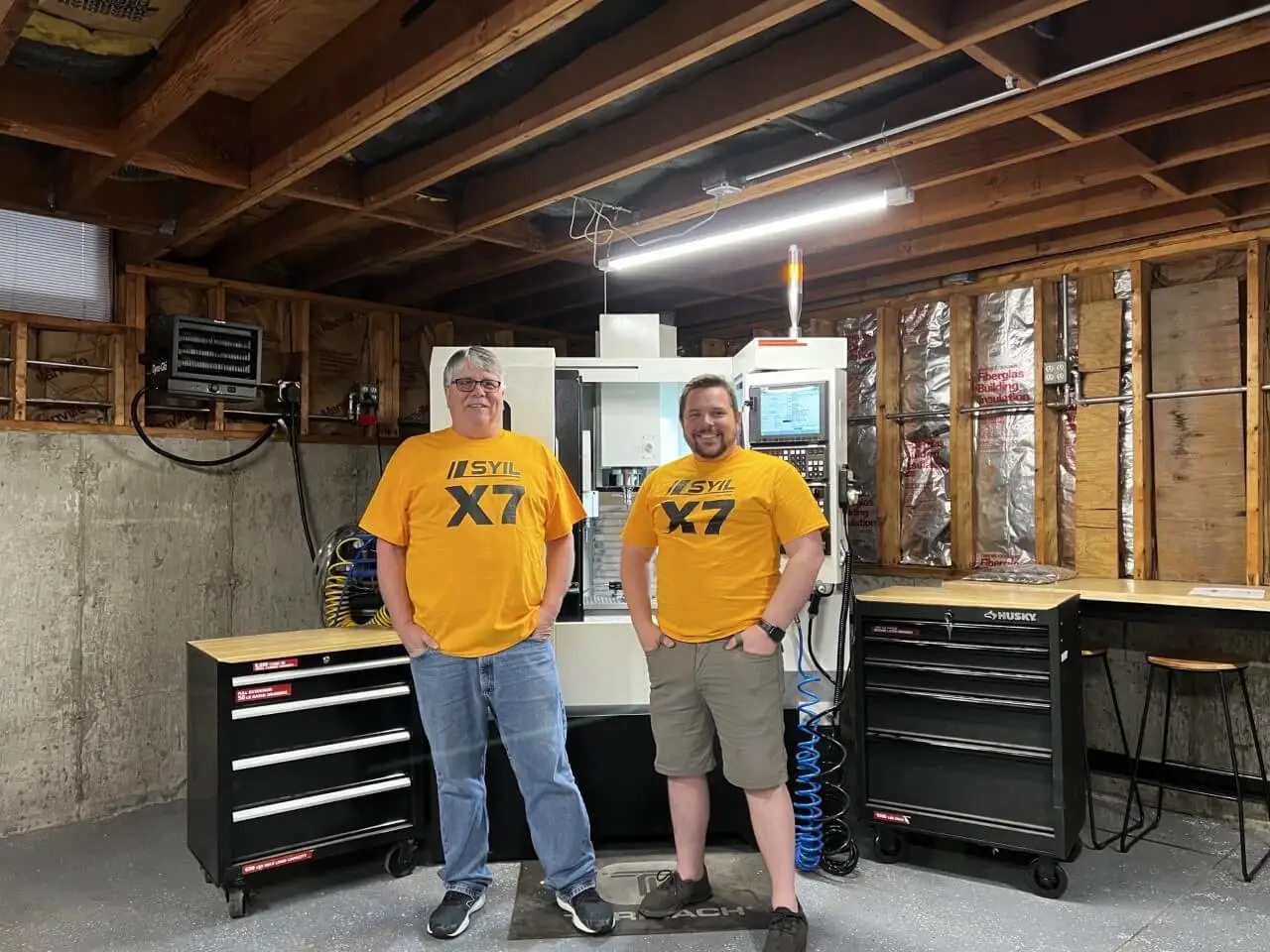Introduction

In the ever-evolving world of electronics, CNC PCB milling stands out as a game-changer, allowing for precise and efficient production of printed circuit boards. This innovative technique combines computer numerical control (CNC) technology with PCB manufacturing to create intricate designs with unparalleled accuracy. As we delve into the nuances of CNC in PCB production, it becomes evident that understanding this process is essential for anyone involved in electronics design and fabrication.
Understanding CNC PCB Milling
So, what is CNC in PCB? At its core, CNC PCB milling involves using computerized machines to mill away material from a substrate to create circuit patterns. This method allows for high precision and repeatability, making it ideal for prototyping and small-batch production runs. By utilizing advanced software and machinery, manufacturers can achieve complex geometries that traditional methods may struggle to replicate.
The Role of SYIL CNC Machines
When discussing CNC machines, SYIL stands out as a leading name in the industry, known for its robust and reliable solutions tailored specifically for PCB milling applications. These machines are designed to handle various materials while delivering exceptional performance and accuracy. Whether you’re looking at prototyping or full-scale production, SYIL CNC machines offer versatility that can significantly enhance your manufacturing capabilities.
Key Benefits of CNC Machining
The advantages of using CNC machining in the context of PCBs are numerous and compelling. For starters, this method allows for faster turnaround times compared to traditional techniques—ideal when you need to request CNC machining quotes quickly! Additionally, the precision offered by CNC milling minimizes errors during production—a crucial factor when creating complex circuits on a board (or CNC board). Overall, embracing this technology not only boosts efficiency but also enhances product quality across the board.
What is CNC in PCB?

CNC, or Computer Numerical Control, has revolutionized the way printed circuit boards (PCBs) are manufactured. This technology allows for precise and automated machining processes that enhance the quality and efficiency of PCB production. So, what is CNC in PCB? It’s the method of using computer-controlled tools to cut, mill, and engrave PCBs with incredible accuracy.
Definition and Overview
At its core, CNC in PCB refers to the use of computer systems to control machinery that fabricates circuit boards. This includes operations like drilling holes, cutting traces, and milling out board shapes. Understanding what a CNC board entails is crucial; it’s essentially a physical representation of digital designs created using CAD software.
The beauty of CNC technology lies in its ability to produce complex geometries that would be nearly impossible with manual methods. With a PC Board CNC Milling Prototyping System at your disposal, you can create intricate designs tailored to specific electronic applications seamlessly. As this technology continues to evolve, it's becoming an essential part of modern electronics manufacturing.
Applications in PCB Production
CNC machining finds diverse applications in PCB production across various industries such as aerospace, automotive, telecommunications, and consumer electronics. From prototyping new designs to producing small batches for testing purposes, CNC offers flexibility that traditional methods cannot match. For instance, engineers often rely on CNC technology when they need rapid iterations on their designs or when they require custom shapes for enclosures.
Moreover, this method is not just limited to creating the boards themselves; it also plays a vital role in producing components like connectors and heat sinks integral to electronic devices. By utilizing a CNC setup sheet—a document detailing all necessary parameters for machining—manufacturers can ensure consistency and precision throughout each production run.
Advantages of CNC over Traditional Methods
When comparing CNC machining with traditional methods like manual milling or laser cutting techniques (What is the difference between CNC and laser PCB?), several advantages become apparent. First off, accuracy is significantly enhanced; while manual methods are prone to human error, a well-programmed CNC machine consistently delivers precise results every time it operates.
Additionally, speed is another critical factor where CNC excels—what might take hours by hand can often be completed in minutes by a machine without sacrificing quality or detail. And let’s not forget about scalability; once you've mastered how to cut a PCB with a CNC router efficiently using your setup sheet guidelines, you can easily ramp up production without compromising on quality.
In summary, choosing CNC over traditional methods offers better accuracy and speed while allowing for complex designs that are essential in today's fast-paced tech landscape—making it an indispensable tool for any serious PCB manufacturer.
Unpacking the CNC Setup Sheet

When diving into the world of CNC PCB milling, understanding the CNC setup sheet is crucial for ensuring precision and efficiency. A well-structured setup sheet acts as a roadmap, guiding operators through each step of the milling process. This document not only enhances workflow but also minimizes errors, making it an essential component in any PC Board CNC Milling Prototyping System.
Importance of Setup Sheets in PCB Milling
Setup sheets play a pivotal role in CNC PCB production by providing detailed instructions on machine settings and tooling requirements. They serve as a reference point that helps operators avoid common pitfalls during the milling process, ensuring that each board meets high-quality standards. Without a comprehensive setup sheet, you might find yourself asking, What is a CNC setup sheet?—and that’s a question you definitely want to avoid on the shop floor.
Essential Elements of a Setup Sheet
A complete CNC setup sheet should include several key elements to ensure smooth operations in PCB manufacturing. First and foremost, it should detail machine specifications, including spindle speeds and feed rates tailored for your specific project needs. Additionally, it should outline material types used in your PCB design and any special tooling required—after all, knowing what tools to use can make or break your project!
Best Practices for Creating Effective Setup Sheets
Creating effective setup sheets requires attention to detail and clarity to make them user-friendly for operators at all skill levels. Start by using clear language and straightforward formatting; bullet points and tables can be particularly helpful for readability. Regularly updating your sheets based on operator feedback will also help improve their effectiveness over time—because let’s face it: nobody wants to request CNC machining quotes based on outdated information!
Cutting Edge: CNC vs. Laser PCB

In the realm of PCB fabrication, two prominent techniques often come into play: CNC milling and laser cutting. Both methods have their unique advantages and applications, making them suitable for different scenarios in the production of PCBs. Understanding these differences is crucial for anyone looking to optimize their PCB manufacturing process.
Comparing Techniques for PCB Fabrication
CNC milling, or Computer Numerical Control milling, involves the use of rotating cutting tools to remove material from a solid substrate, creating intricate designs and features on a CNC board. On the other hand, laser cutting employs focused beams of light to vaporize material away from the surface, allowing for high precision but with different limitations in depth and material types. When deciding between these two methods, it's essential to consider the specific requirements of your project—whether you need detailed etching or faster production times.
Pros and Cons of CNC Milling
CNC milling has several advantages that make it a go-to choice for many PCB manufacturers: it offers excellent precision and can handle various materials effectively. Additionally, using a PC Board CNC Milling Prototyping System allows for rapid prototyping and iteration without significant downtime between setups. However, CNC machining can be slower than laser cutting when it comes to large production runs due to its mechanical nature; thus, knowing what is CNC in PCB is vital before making a choice.
Despite its strengths, there are downsides to consider with CNC milling as well—such as higher initial setup costs and potentially more complex tooling requirements compared to laser methods. The need for a detailed CNC setup sheet can add an extra layer of preparation that may not be necessary with laser cutting processes. Ultimately, weighing these pros and cons will guide you toward the best method suited for your specific needs.
When to Choose Laser Cutting Over CNC
While both techniques have their merits, there are scenarios where opting for laser cutting may be more advantageous than traditional CNC methods. For projects requiring rapid production with minimal setup time or those needing very fine cuts on thinner materials like flexible PCBs, laser technology shines brightly—pun intended! Additionally, if you're working on prototypes that demand quick iterations without extensive tooling adjustments or if you require intricate designs that are hard to achieve through standard milling practices.
However, if you're wondering what is the difference between CNC and laser PCB in terms of versatility across various thicknesses or material types—the answer lies in understanding each method's strengths relative to your project's demands. In situations where depth control is essential or when working with thicker substrates is necessary (like FR-4), sticking with a robust CNC approach might serve you better than switching gears entirely toward lasers.
The Anatomy of a CNC Board

When delving into the anatomy of a CNC board, it's essential to understand the components and materials that make up these intricate designs. A CNC PCB, or Computer Numerical Control Printed Circuit Board, incorporates various elements such as copper layers, substrates like FR-4, and solder masks. Each material serves a specific purpose in ensuring functionality and durability, making it crucial for anyone involved in PCB production to grasp what is a CNC board.
Components and Materials Used
The primary components of a CNC PCB include conductive traces made from copper, which facilitate electrical connections between different parts of the circuit. The substrate material, often FR-4 or similar composites, provides structural integrity while insulating the conductive elements. Additionally, solder masks are applied to protect these traces from oxidation and short-circuiting during use; knowing how to cut a PCB with a CNC router effectively requires familiarity with these materials.
Incorporating high-quality materials not only enhances the performance of your PC board but also contributes to its longevity. When selecting materials for your CNC PCB project, consider factors such as thermal conductivity and dielectric properties that align with your specific application needs. Understanding what is CNC in PCB can significantly influence your choices regarding component selection.
Design Considerations for Successful Milling
Designing for successful milling involves several critical considerations that can impact the overall quality of your final product. One key aspect is ensuring appropriate trace widths and spacing; this reduces the risk of electrical shorts while maintaining signal integrity through optimized design layouts. Additionally, incorporating adequate drill hole sizes is vital when planning for component placement on your CNC board.
Another important factor is understanding how design intricacies affect milling processes—tight corners or complex geometries can lead to challenges during machining if not properly accounted for in advance. Utilizing software tools designed specifically for PC Board CNC Milling Prototyping System can streamline this process by generating precise tool paths tailored to your design specifications. Always remember that careful planning will save you time later when you request CNC machining quotes.
Common Mistakes to Avoid
Even seasoned professionals can stumble upon pitfalls when creating their first few CNC boards; avoiding common mistakes is key to success in this field. One frequent error involves neglecting proper clearance around components—insufficient space may hinder assembly or lead to operational failures later on in the lifecycle of your project. Furthermore, failing to account for milling tolerances can result in ill-fitting parts that complicate assembly processes.
Another common oversight relates to insufficient documentation; without an effective setup sheet outlining specifications like tool types and feed rates, operators may struggle during production runs leading potentially costly errors down the line. Understanding what is the difference between CNC and laser PCB fabrication techniques can also help prevent missteps by guiding decisions on which method best suits specific project requirements. By steering clear of these mistakes from the outset, you'll set yourself up for smoother operations throughout your entire milling journey.
Mastering PC Board CNC Milling Prototyping

CNC PCB milling is a game-changer for prototyping, allowing for precision and flexibility in the design process. Understanding how to effectively operate this technology can significantly enhance your PCB production capabilities. In this section, we’ll explore a step-by-step guide to CNC milling PCBs, tips for achieving precision, and how to maximize the use of SYIL machines.
Step-by-Step Guide to CNC Milling PCBs
To embark on your journey of PC Board CNC milling prototyping, start by preparing your design files in a suitable format such as Gerber or DXF. Once you have your files ready, create a CNC setup sheet that outlines all necessary parameters including tool selection and material specifications—this is crucial for successful execution. Next, load the material onto the CNC machine bed and ensure it is securely fastened before calibrating the machine according to your setup sheet.
Once everything is set up, you will initiate the milling process by selecting the correct program on your SYIL machine. As it cuts through the substrate with precision, monitor the operation closely for any abnormalities that may arise—this ensures quality control at every stage. After milling is complete, inspect the final product against your specifications; this step is vital in confirming that what you have produced meets industry standards.
Tips for Achieving Precision in Milling
Precision in CNC PCB production hinges on several factors including tool selection and machine calibration. Always choose high-quality bits designed specifically for PCB work; dull or inappropriate tools can lead to poor results or even damage to your boards. Additionally, regular maintenance of your SYIL machine will ensure consistent performance—cleaning debris from cutting areas and checking alignment frequently can make all the difference.
Another critical aspect of achieving precision involves understanding feed rates and spindle speeds appropriate for different materials used in PCB fabrication. Experimentation may be necessary here; start with conservative settings and gradually adjust based on results until you find an optimal balance between speed and accuracy. Finally, consider using software simulations prior to actual milling; these programs can help visualize potential issues before they occur.
Using the SYIL CNC Machine Effectively
The SYIL CNC machine stands out as an excellent choice when delving into what is CNC in PCB manufacturing due to its user-friendly interface and robust capabilities. Familiarize yourself with its features through tutorials or training sessions offered by manufacturers—understanding all functionalities helps unlock its full potential during production runs. Utilize built-in features like automatic tool changers which streamline workflows significantly when working on complex designs.
When operating your SYIL machine, always adhere strictly to safety protocols; wearing protective gear while keeping workspaces organized reduces risks associated with machining operations immensely. Also, don’t hesitate to request CNC machining quotes from various suppliers if you're looking at outsourcing some aspects of production—it’s often beneficial to compare costs versus capabilities before making decisions about scaling up operations or investing further into equipment.
Lastly, keep abreast of advancements within CNC technology as they pertain specifically to PCB applications; ongoing education allows you not only stay competitive but also enhances creativity within designs you produce using a PC Board CNC milling prototyping system.
Conclusion

As we wrap up our exploration of CNC PCB technology, it's clear that this method is not just a passing trend but a cornerstone of modern electronics manufacturing. The future of CNC PCB technology looks promising, with advancements in precision and efficiency set to revolutionize how we design and produce circuit boards. With the integration of smart technologies and automation, the potential for enhanced capabilities in CNC machining is vast, making it an exciting time for both manufacturers and designers alike.
The Future of CNC PCB Technology
Looking ahead, the future of CNC in PCB production seems bright as innovations continue to emerge. Emerging technologies such as AI-driven design tools and IoT-enabled machines promise to streamline processes further, enhancing accuracy while reducing lead times. As industries demand more complex designs at faster rates, understanding what is a CNC board will become increasingly essential for engineers and manufacturers striving to stay competitive.
Maximizing Efficiency in PCB Production
Maximizing efficiency in PCB production involves leveraging the strengths of various techniques, including understanding what is the difference between CNC and laser PCB fabrication methods. By selecting the right approach based on specific project needs—such as volume requirements or material types—manufacturers can significantly reduce waste and costs while improving turnaround times. Additionally, having a well-structured CNC setup sheet can ensure that every aspect of production runs smoothly from start to finish.
How to Request CNC Machining Quotes
When it comes time to scale your projects or seek new partners for your manufacturing needs, knowing how to request CNC machining quotes effectively can make all the difference. Be clear about your specifications, including details like material type and desired tolerances; this will help suppliers provide accurate estimates tailored to your requirements. Moreover, familiarizing yourself with terms like PC Board CNC Milling Prototyping System will empower you during negotiations and discussions about capabilities.

